What are the boundaries of true pelvis?
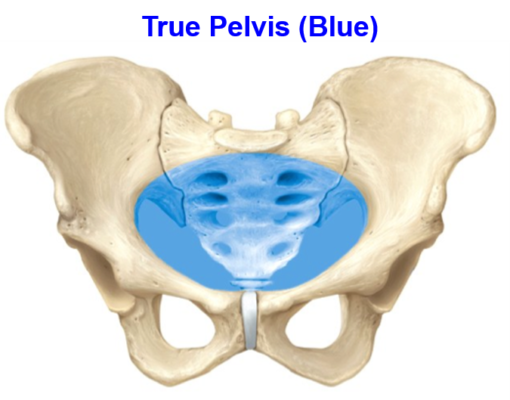
The boundaries of true pelvis are:
- Anteriorly: Pubic symphysis and pubic bones.
- Anterolateraly: Pelvic surface of ilium and ischium below arcuate line.
- Posterolateraly: Greater and lesser sciatic foramina and sacrotuberous and sacrospinous ligaments.
- Posteriorly: Pelvic surface of sacrum and coccyx.
What are the boundaries of pelvic inlet and outlet?
Pelvic inlet (pelvic brim)/superior aperture of pelvis separates the greater pelvis from the lesser pelvis. Its boundaries are as follows:
- Anteriorly: Upper margin of pubic symphysis.
- On either side: Linea terminalis (formed by pubic crest, pectineal line/pecten pubis,arcuate line and anterior margin of ala of sacrum).
- Posteriorly: Sacral promontory.
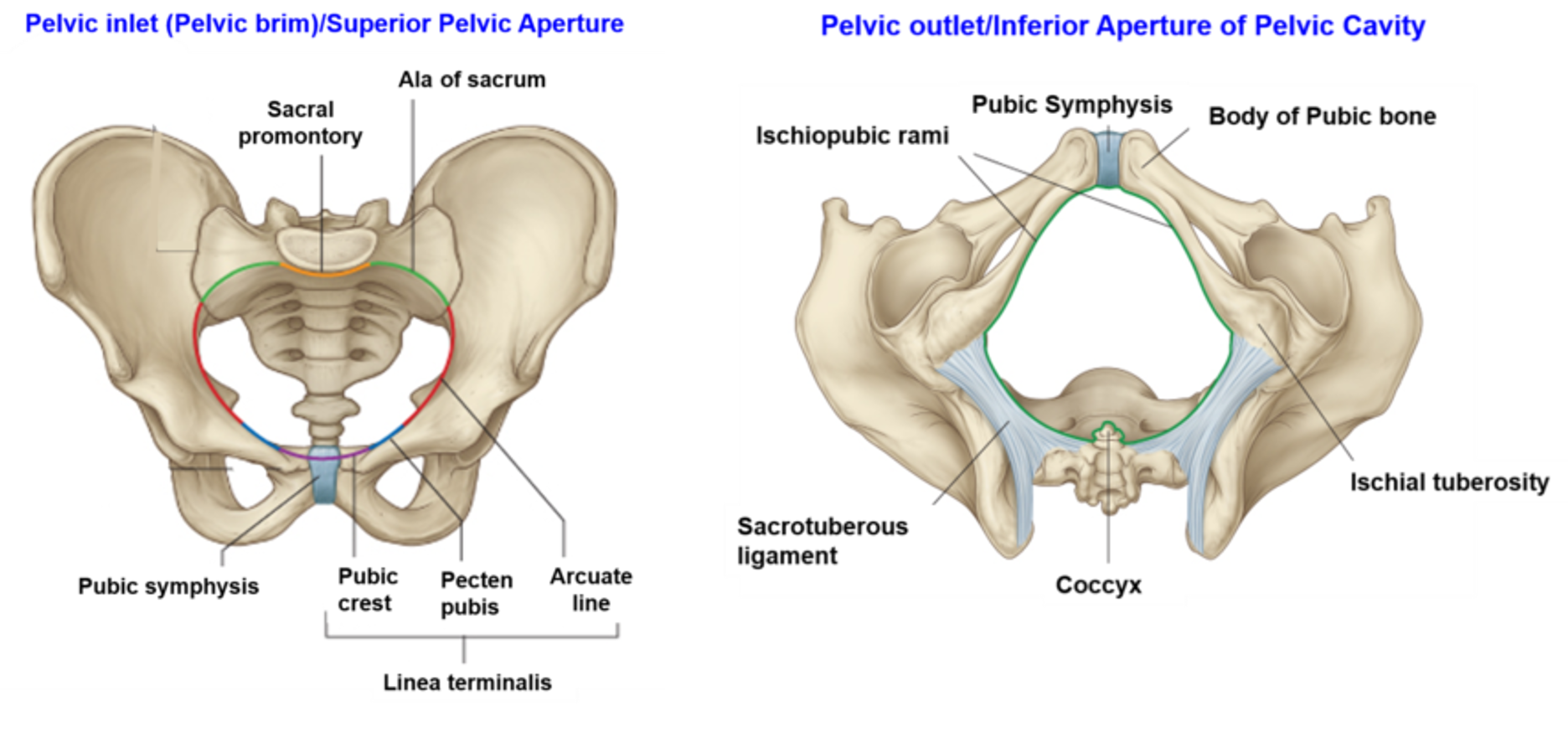
Pelvic outlet/ inferior aperture of pelvis separates pelvic cavity from perineum.Its boundaries are as follows:
- Anteriorly: Lower margin of pubic symphysis.
- Anterolaterally: Ischiopubic ramus on either side.
- Posterolaterally: Sacrotuberous ligament on either side.
- Posteriorly: Tip of coccyx.
Enumerate the Muscles of true pelvis.
The muscles of true pelvis are:
- Obturator internus
- Piriformis
- Levator ani
- Coccygeous
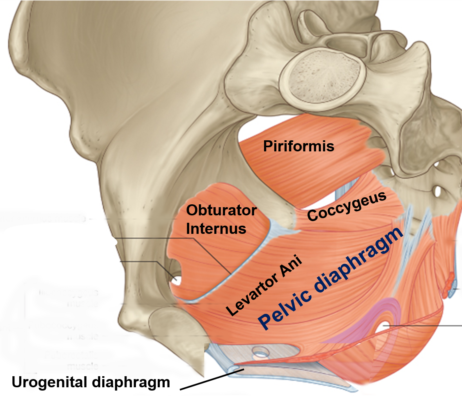
Write in a tabulated form origin, insertion, action and nerve supply of obturator internus and piriformis muscles.
Muscle Origin Insertion Action Nerve Supply Obturator internus Obturator membrane, Margins of obturator foramen and pelvic surface of ileum Medial surface of greater trochanter of femur. Lateral rotator of the thigh at hip joint Nerve to obturator internus (L5,S1,S2) Piriformis Pelvic surface of the middle three pieces of sacrum by three digitations Apex/tip of greater trochanter of femur Lateral rotator of the thigh at hip joint Ventral rami of S1, S2
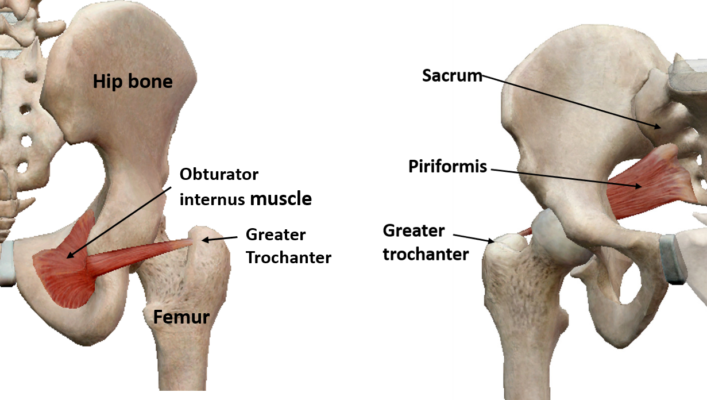
Describe the muscles of pelvic diaphragm.
Pelvic diaphragm forms the V-shaped floor of the true pelvis. It separates pelvis from the perineum.
- Levator ani muscle
- Coccygeus muscle
Levator ani : It is a broad flat muscle. It takes origin from the inner aspect of pelvis along a line extending from the body of the pubis to the ischial spine. –Muscle fibers sweep downwards and backwards towards the median plane to unite with the muscle of the opposite side.Is supplied by ventral rami of S3,S4 on the pelvic surface and pudendal nerve on the perineal surface It consists of two parts:
- Pubococcygeus
- Iliococcygeus
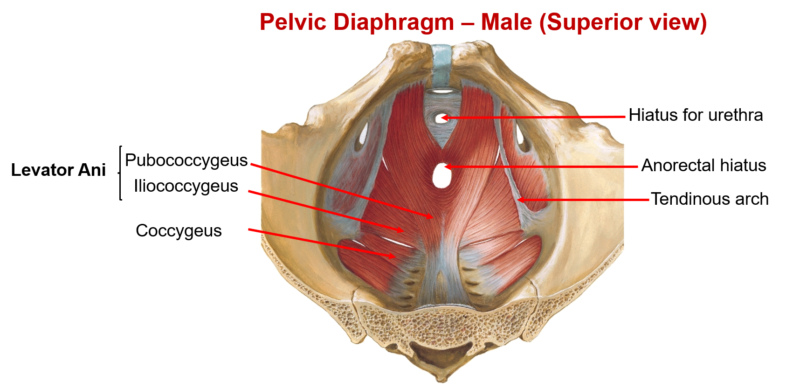
Pubococcygeus: According to the attachment of fibers it is subdivided into three parts.
- Levator prostate(in males) /Pubovaginalis (in females): It takes origin from the posterior surface of body of pubis. It form a U-shaped sling around the prostate gland in males and vagina in females. It is inserted into perineal body.
- Puborectalis: It takes origin from the posterior surface of pubis. Muscle fibers pass medially and downwards to join the fibers of the opposite side and form U-shaped sling around the anorectal junction. Some fibers blend with the fibers of the deep part of the external anal sphincter to form the conjoint longitudinal coat of the anal canal.
- Pubococcygeus proper: It takes origin from the posterior surface of body of pubis and anterior half of tendinous arch of obturator fascia. It isinserted into anococcygeal raphe.
Iliococcygeus: It takes origin from the posterior half of tendinous ach of obturator fascia and ischial spine and is inserted into the anococcygeal ligament and side of coccyx.
Coccygeus (Ischiococcygeus): It takes origin from the ischial spine and is inserted into coccyx and fifth sacral vertebra. It is supplied by perineal branch of S4.
Describe briefly the disposition of pelvic fascia.
Pelvic fascia: Covers the superior and inferior surfaces of the muscles forming pelvic diaphragm.
o Superior fascia of pelvic diaphragm: It is attached anteriorly to the posterior surface of body of pubis and superior ramus of pubis. Laterally it is continuous with obturator fascia and posteriorly with the fascia on the piriformis.
o Inferior fascia of pelvic diaphragm: It is continuous with obturator fascia laterally and medially blends with the fascia on sphincter ani externus.
Enumerate the openings in the pelvic diaphragm.
Openings in pelvic diaphragm: Pelvic diaphragm has openings for the following structures passing through it :
- Urethra
- Anal canal and
- In females vagina.
Enumerate the functions/actions of pelvic diaphragm.
Functions/actions of pelvic diaphragm:
- To support the pelvic viscera whenever there is rise in intraabdominal pressure.
- Assists in increasing intraabdominal pressure during defaecation, micturition and parturition.
- Puborectalis pulls the anorectal junction forward and maintain the rectal continence. The muscle relaxes during defaecation.
- Puboprostatic part may help in expelling the urine during micturition
- Muscles of the pelvic diaphragm guide the fetal head in anteroosterior direction during the second stage of labor.
Applied Aspects
Pelvic diaphragm may be torn during difficult childbirth
It results in weakness of the muscles of pelvic diaphragm which in turn causes defective support of pelvic viscera. It may cause uterine prolapse or prolapsed of the rectum or urinary incontinence.
